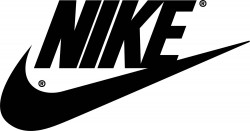
A trademark can be any word, phrase, symbol, design, or a combination of these things that identifies your goods or services. It’s how customers recognize you in the marketplace and distinguish you from your competitors.
The word “trademark” can refer to both trademarks and service marks. A trademark is used for goods, while a service mark is used for services.
A trademark:
A common misconception is that having a trademark means you legally own a particular word or phrase and can prevent others from using it. However, you don’t have rights to the word or phrase in general, only to how that word or phrase is used with your specific goods or services.
Information from the USPTO (emphases added).
Your rights to a use a trademark begin to accrue as soon as you start using it to identify your sources of good or services, without any formal registration. Every time you use your trademark, you can use a symbol with it. The symbol lets consumers and competitors know you’re claiming the trademark as yours. You can use “TM” for goods or “SM” for services even if you haven’t filed an application to register your trademark.
It is your choice whether to file for federal trademark registration. The benefits include:
A domain name or business name is not a trademark.
A domain name is an internet address registered through a domain name company. A domain name may be eligible for trademark registration. It is possible for a domain name to infringe on someone's trademark. Learn more about domain names and trademark infringement at the Internet Corporation of Assigned Names and Numbers (ICANN) site.
A business name is the name under which you do business in a state or jurisdiction. Registering a business name in your state does not equal trademark registration. A business name may be trademarked if you use it to distinguish your goods from those of another.
Information from the Arizona State Library.
Most trademarks are registered in standard character format. This format protects words, letters, numbers, or a combination of those without any limitation to a specific font style, size, color, or design. Basically, you’re getting protection for the words themselves, regardless of how they’re displayed, like with the registered word Coca-Cola.
Some other standard character format examples include:
Information from the USPTO.
Trademarks registered in special form format protect trademarks that are stylized , have designs or logos, or are in color. Trademark owners typically register in special form format when the stylization and design is an important part of the trademark. With this format, you’re getting protection specifically for the way the trademark looks.

The McDonald’s golden arches design is an example of a registered trademark in special form format.

The company Nike registered this trademark in special form format, combining the stylized word Nike with their swoosh logo.
The format of the trademark you apply to register affects your application filing requirements. Learn more about the two different formats of trademarks and their filing requirements.
Information from the USPTO.
If you cannot play these files, and your computer is otherwise set up to play musical sounds, you can use your favorite web search engine to locate a browser plug-in that works with these files. Search for the terms: "mp3 player browser" or "wav player browser"
72349496
NBC - Entertainment - Chimes
73270308
Beneficial - Insurance -" At Beneficial TOOT TOOT You're Good for More..."
73391897
Del's Lemonade & Refreshments - Carryout Food Mobile Truck - Horn
73432170
Al Ham Productions - Entertainment -
The Dreams We Share, We'll Always Remember, Remember With The Music Of Your Life "
73553567

MGM - Entertainment - Roaring Lion
More sound mark examples can be found on the USPTO website.
™ and ℠ symbols
Every time you use your trademark, you can use a symbol with it. The symbol lets consumers and competitors know you’re claiming the trademark as yours. You can use “TM” for goods or “SM” for services even if you haven’t filed an application to register your trademark.
® symbol
Once you register your trademark with the USPTO, you can use an ® with the trademark. You may use the registration symbol anywhere around the trademark, although most trademark owners use the symbol in a superscript or subscript manner to the right of the trademark. You may only use the registration symbol with the trademark for the goods or services listed in the federal trademark registration.
Information from the Arizona State Library.